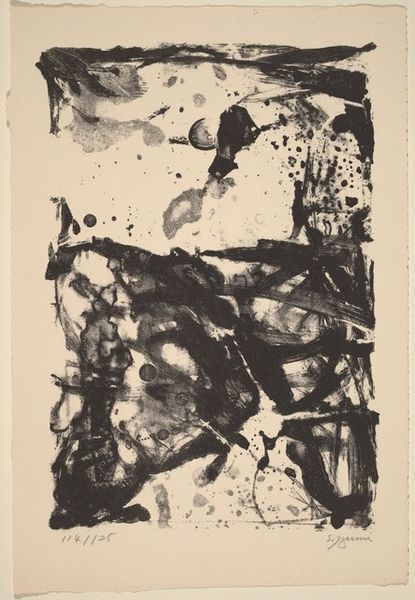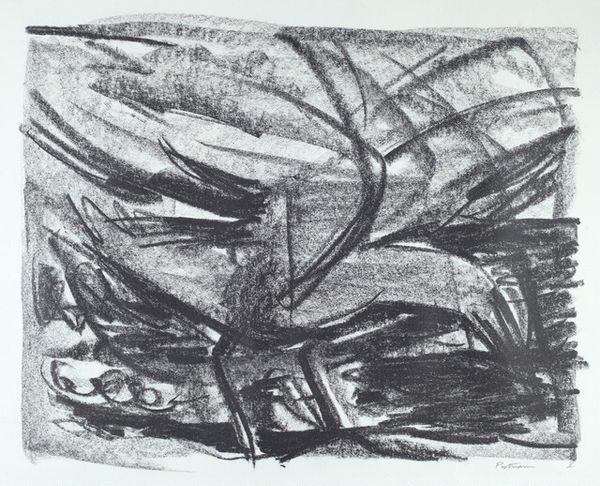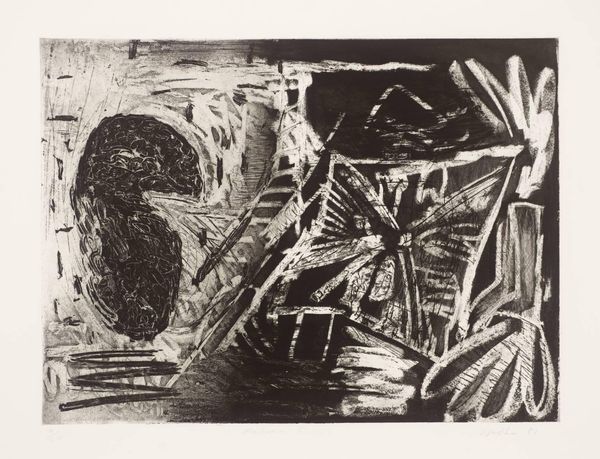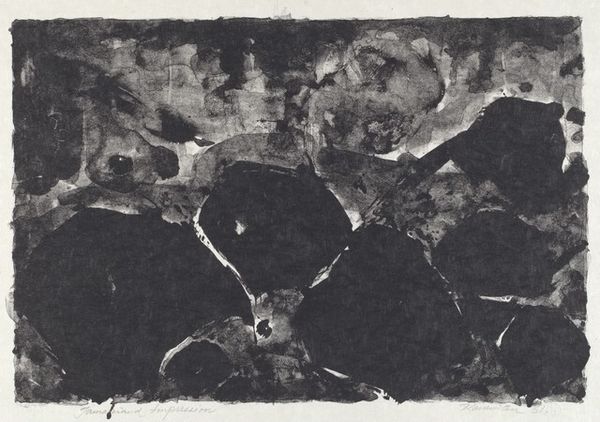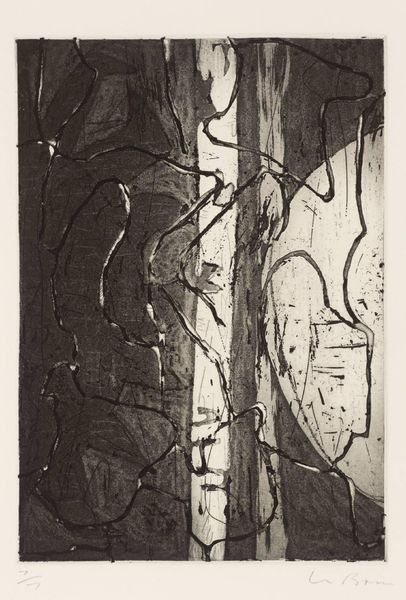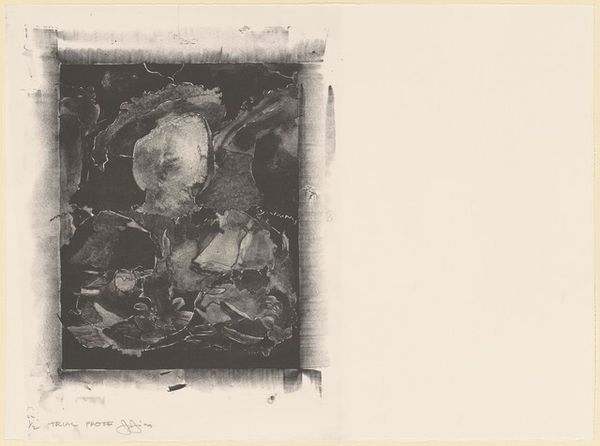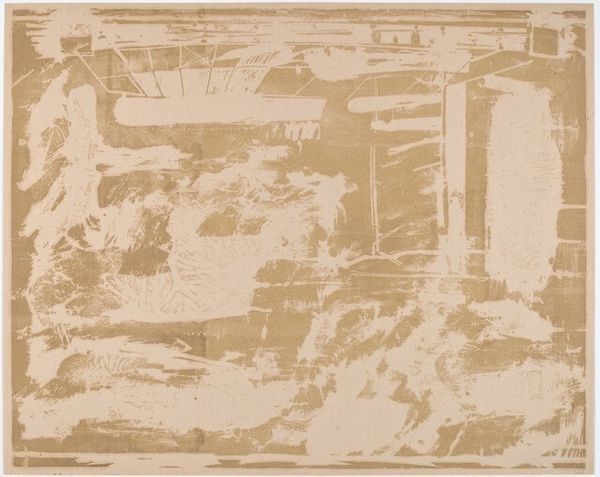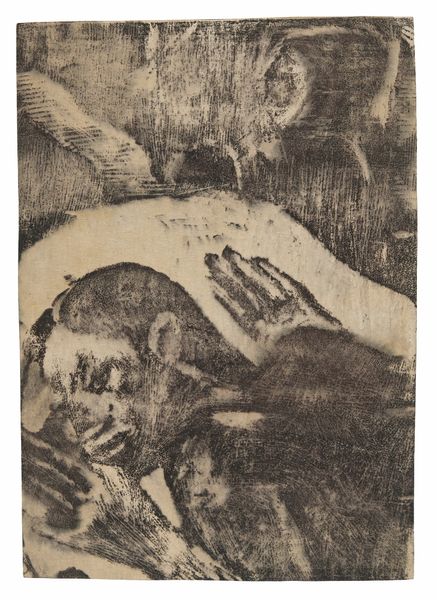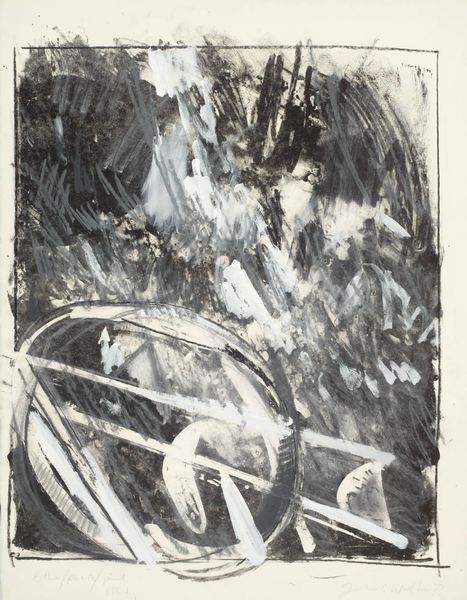
graphic-art, print
#
graphic-art
# print
#
linocut print
#
geometric
#
abstraction
Dimensions: image: 61 x 91.4 cm (24 x 36 in.) sight size: 66 x 96.5 cm (26 x 38 in.)
Copyright: National Gallery of Art: CC0 1.0
Curator: This piece is by John Clem Clarke, titled "Black and White Abstract." It's a linocut print from 1972. What are your immediate impressions? Editor: You know, at first glance, it looks like a close-up of some ancient ruins. Very moody, almost like looking through a broken lens into the past. All that stark contrast—makes you feel like you’re seeing the world stripped bare. Curator: Stripped bare, yes, that's interesting. It's significant that Clarke chose linocut—a relief printing technique—in a period rife with social and political unrest. How might that impact your interpretation of it? Editor: Okay, now that you mention it... the choppiness, the lack of smoothness... It definitely amps up the anxiety. There’s something unsettled about it. Feels like the world is made of sharp edges, doesn't it? Each geometric shape is almost fighting the other for space. Curator: Indeed. The geometric abstraction becomes a powerful visual language. The black and white further simplify things, channeling specific narratives relating to identity politics. Consider the legacy of minimalist aesthetics adopted as a reaction against dominant cultural narratives, how might Clarke engage in this discourse through the print? Editor: It's fascinating! Stripping everything back to the bones, the very foundations, you know? The linocut actually forces this radical simplification. In a way, it becomes almost architectural; you're not just seeing, you're deconstructing. It feels...powerful. Intentionally unsettling the observer. Curator: Exactly. Its monochromatic nature isn’t merely aesthetic. Rather, it calls to the historical dichotomy deeply embedded in socio-political discussions. By reducing the visual information, Clarke amplifies this conceptual interplay. Editor: Right. This print now evokes thoughts of both constraint and raw expressive power. There’s something about limiting your palette, but it feels strangely liberating for the viewer as well, freeing them to project meanings. Thank you. Curator: Precisely. This approach facilitates an active engagement where the viewer fills in the gaps, contributing their interpretations to this socio-political reflection.
Comments
No comments
Be the first to comment and join the conversation on the ultimate creative platform.



